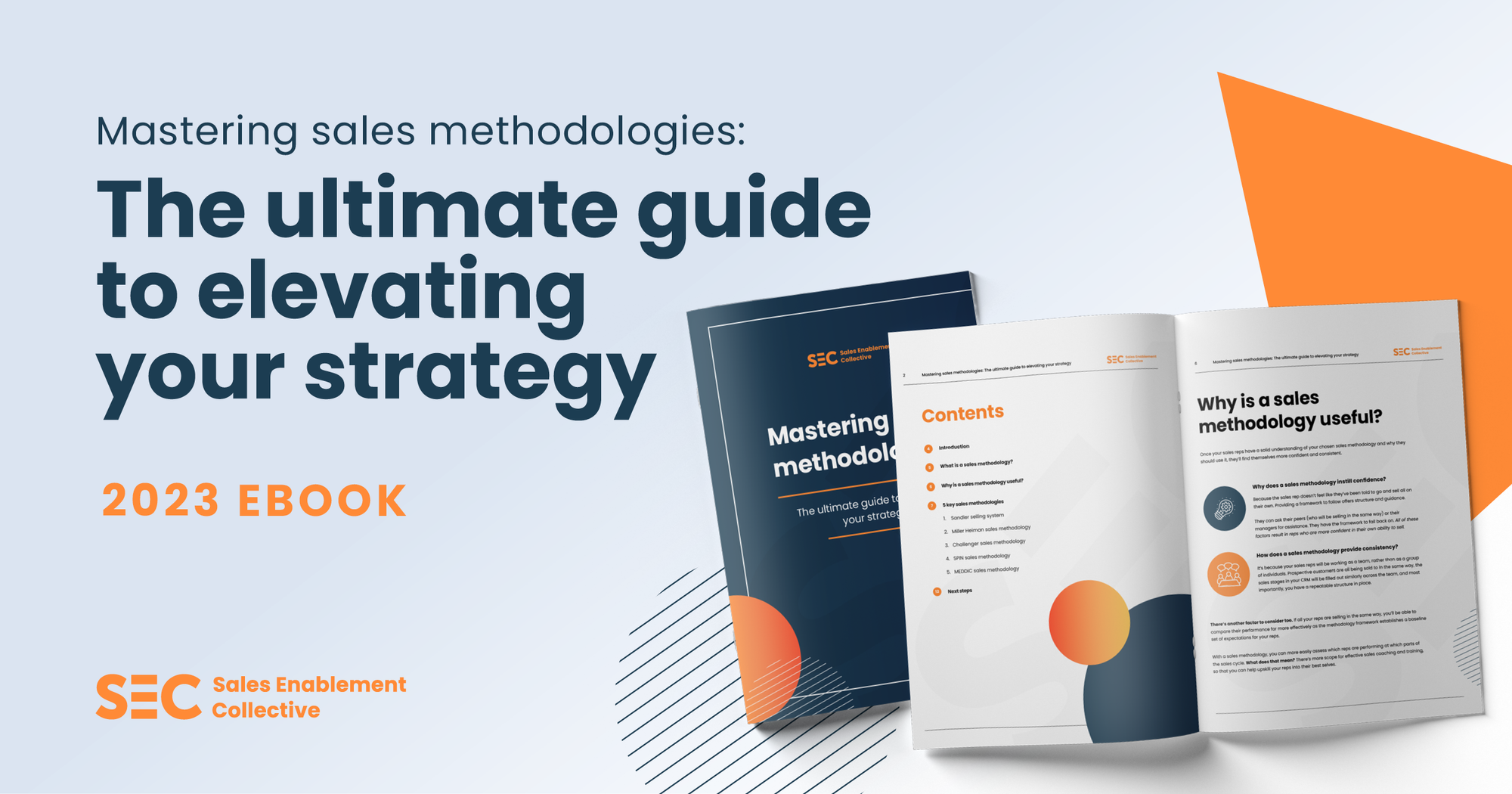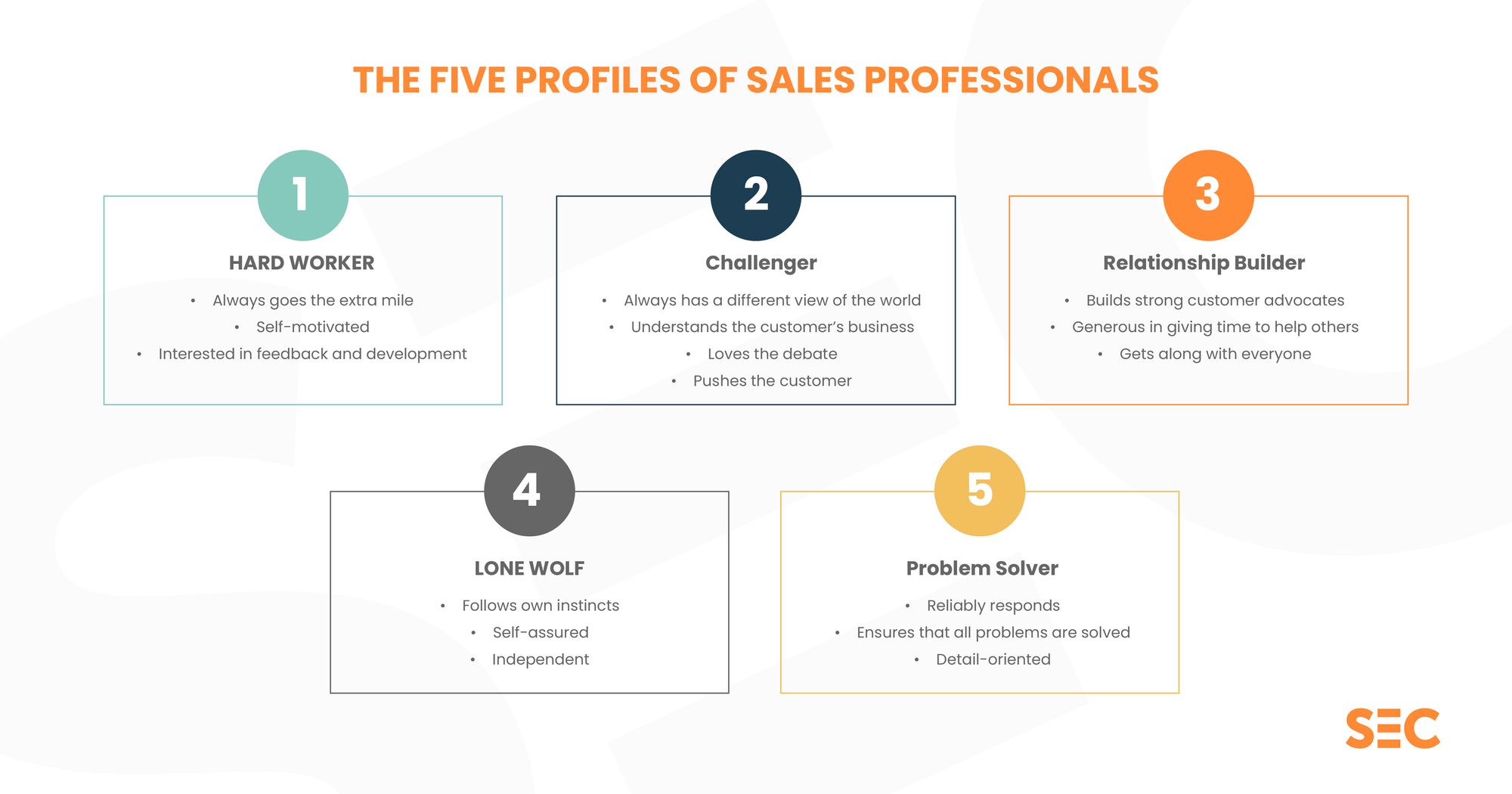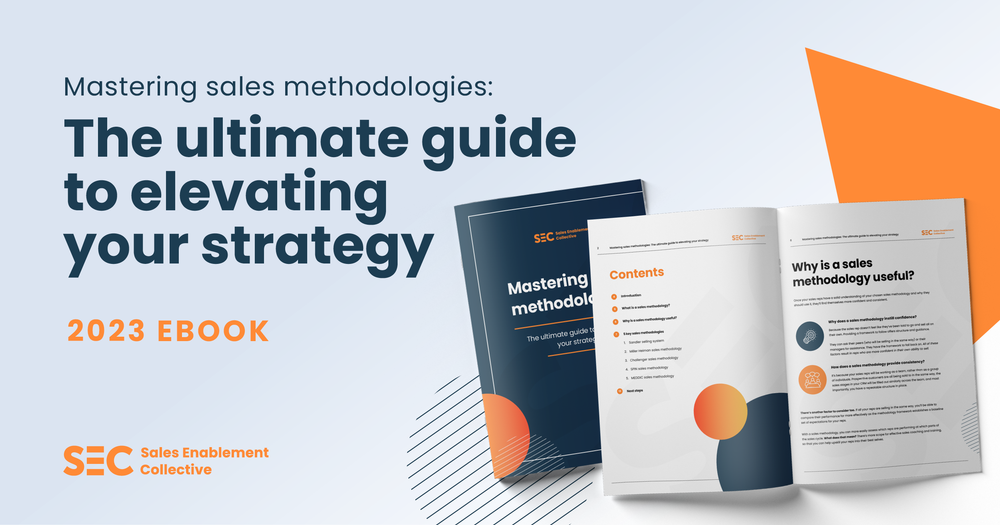Our analysis of popular B2B sales methodologies now brings us to the Challenger sales model, devised by Matthew Dixon and Brent Adamson in their book, The Challenger Sale.
What separates the Challenger sales model from other methodologies is that it doesn’t focus on or encourage building relationships with potential customers.
Instead, the Challenger methodology is based on encouraging your salespeople to emulate the behaviors of high-performing “challengers” by being problem solvers who take initiative.
With the Challenger model, your sales team should take control of the sale during the sales cycle and lead their prospects to solutions.
Dixon and Adamson are of the belief that this role is more effective and time-efficient in closing complex sales than spending lots of time building a relationship with their lead.
This methodology is based on a few key points, so in this article we’ll focus on:
- The five types of sales reps, according to the Challenger model
- Why challenger-type sales reps should be emulated
- The Challenger sales model phases
- Coaching non-challengers with the methodology
Let’s dive right in. 👇
The five types of sales rep
The Challenger sales approach is based on research into attitude and behavior by the authors that found that there are five main types of sales rep. These are:
The hard worker, the relationship builder, the lone wolf, the problem solver, and the challenger.
The methodology is based on the idea that challengers are the high performers, and their behavior should be (and can be) emulated by the other types of rep in their sales process. It’s also important to note that these archetypes are not mutually exclusive - a rep can have attributes from various groupings.
So let’s take a quick look at each profile before going into a little more detail on the challenger rep.
The hard worker
The hard-working rep is always willing to go the extra mile. This profile of rep is self-motivated and eager to improve their skills and develop as a salesperson. They won’t give up on a deal easily.
The relationship builder
The relationship builder rep focuses on creating an emotional connection with the lead. They’ll dedicate plenty of their time to helping out in any way they can, and will aim to find a strong internal advocate in the lead’s organization. Relationship building is a core part of many other methodologies, but not with Challenger selling.
The lone wolf
The lone wolf rep is highly independent and self-driven, trusting their own instincts during a sale. Generally, they are not a team player, but has good selling skills despite lacking in the intrapersonal department.
The problem solver
The problem solver rep has a keen eye for detail, and pays close attention to the prospect’s pain points in order to find the best solutions. Their drive comes from solving challenges that others are struggling with.
The challenger
The challenger sales rep is the methodology’s namesake. A challenger has a different view of the world and offers unique perspectives to the prospects. They’re lively and up for a debate, have a great understanding of the lead’s business and don’t fear conversations about money.
A challenger is able to push a lead out of their comfort zone and tailor their sales pitch to take control of the conversation and teach the prospect something new.

Why should challenger-type reps be emulated?
Now that we know about each profile of rep, let’s look at what makes challengers the star performers in the sales landscape.
Because modern B2B buyers are spending less time with sellers, and more time doing their own research, they come into sales calls full of knowledge. However, they’re increasingly overwhelmed by the amount of options on the market.
Using the Challenger sales method means you skip the talk about features and benefits that the prospect already knows, and instead work on taking control of the conversation and challenging their existing beliefs,then pitching your alternative solution.
A Challenger method rep will open a prospect’s eyes to different possible solutions and then tailor a pitch to match the prospect’s specific needs.
Ultimately, it’s about informing and teaching a prospect about the solutions to their problems, and then positioning your solution as the ideal one.
Rather than spending time beating around the bush in a relationship-building phase, you gain customer loyalty by respecting what they already know and then teaching them more.
Why should this Challenger style of selling be emulated? Because challengers are usually the top sales performers.
If you’re in sales management, you’ll find that the sales professionals using this technique are more successful, according to the book.

Fill out the form below to get our ebook on how to master sales methodologies. This ebook covers proven sales methodologies to help you close more deals. It’s the ultimate guide to elevating your sales strategy.

The Challenger sales model phases
As we already highlighted, challenger reps will tailor their approach and pitch in order to increase their chances of success.
However, there are templates for sales reps to follow in each conversation, to help guide them. Here, we lay out the template step-by-step:
Step 1: The warm-up
The first step is to prove to the prospect that you understand their challenges and pain points.
Unlike other sales methodologies, which often begin by building rapport and relationships, the Challenger sales model has a rep investigating the prospect’s needs and issues right away.
This builds credibility as the prospect will understand that you’re truly interested in them and their challenges, not just selling them a product.
In this stage, a challenger rep shouldn’t mention their product at all. Instead, all the focus should be on researching the prospect’s needs.
Step 2: Reframe
After discovering a noteworthy pain point in the warm-up phase, a challenger rep should then begin to dig into the real reason this problem exists before reframing it as an opportunity for growth.
As the rep dives into the prospect’s issue further, they can push back against the prospect’s existing ideas on solving the problem (tactfully), and instead get them thinking about unique perspectives that hadn’t yet been considered.
By the end of this phase, the lead understands that their existing problem-solving solution wasn’t going to work. The rep can then reframe the conversation towards new and better solutions.
This step requires confidence and self-assurance from the challenger rep.
It’s also important to note that, once again, your product or service isn’t being discussed in this phase. Instead, it’s all about opening the prospect’s mind to new ways of solving their problem.

Step 3: Rational drowning and emotional impact
This step is sometimes broken into two parts - however as both concepts involve evoking emotions from your prospect, we’ve paired them together here.
Let’s take a look:
Step 3a: Rational drowning
The rational drowning phase builds on the work you did when reframing the conversation. By now, the prospect should be open to new ideas and the rep should have a very good understanding of the prospect’s pain points and needs.
Then, you present the prospect with the rational, numbers-driven data that shows the cost of not solving their problem.
These figures should make them feel a little bit uncomfortable, and you create a real business case for adopting a solution rather than keeping things the same.
While other methodologies have a rep focus on your product’s benefits, the Challenger sales strategy argues that just knowing the benefits of a product isn’t enough to shift a business’s status quo.
Highlighting the true statistics associated with changing is more powerful.
Step 3b: Emotional impact
Next, the challenger rep should create an emotional impact with the lead. Despite the modern B2B sales environment being more data-driven than ever before, sales experiences are still influenced by the buyer’s emotions so it’s important to not neglect that.
In this phase, a challenger rep should share case studies, or other stories of other customer’s problems that were solved by this new solution.
This way, the prospect starts to relate to these success stories and can start envisioning themselves in that same position - and associating positive emotions with the new solution.
What this does is solidify the reframing and rational drowning from earlier.
Now, the prospect knows that there are alternative approaches to their original plan, and recognizes that there’s a great business case - backed by statistics - to taking this new approach highlighted by the challenger rep.
Combine that with the relatable social proof of case studies, and it’s difficult for the prospect to see any benefit in remaining stuck in their old ways.
Step 4: A new way
Now, with the prospect in a state of mind that’s fully geared towards accepting this new and unique approach that the rep has been advocating for, it’s time to move the deal forward another step.
In this phase, the Challenger rep educates the prospect on this newfound solution and what it looks like in practice - still without mentioning your product or service specifically.
This phase is about further showing the prospect that there’s an easy solution to their problem that they described earlier.
Here, you can build from your product’s value proposition to truly highlight the positive future the prospect can have if they solve their problem.
You should also discuss what the prospect would have to change about their processes and behaviors in order to actually solve their pain point.

Step 5: Your solution
Now, you’re almost done.
At this point, the prospect should be convinced that they want a solution to their problem, and that they want the solution to work just like your product or service.
All that’s left is to present your product or service to the lead and say: “Hey, look! That solution you really want exists - and we provide it better than anyone else”.
Of course, you’ll have to tailor this line based on what you’ve learned about the decision-maker throughout this sales process but essentially that is the message you’re conveying.
The next step should almost happen automatically, because the prospect will naturally be inclined to want a demo, or to get more information.
A successful challenger process should end up here, with a well-informed rep presenting their solution to a prospect whose mind has been opened to exploring new ways to solve a major pain point in their organization.
Turning non-challengers into challengers
As we’ve seen, the Challenger method can be very effective. However, “challenger” reps are only one of the five types of rep. Challengers are usually top performers, so it can be difficult to recreate their techniques.
Sales leaders who adopt the Challenger strategy may find the other four rep personas will struggle to convert to the challenger approach, so here are some quickfire tips for each rep archetype.
Coaching a hard worker:
- Hard workers are very open to feedback, so with consistent coaching they’re likely to pick up on the methodology. Don’t leave them to their own devices because they like to hear from you on how they’re developing.
Coaching a relationship builder:
- Explain to them that not spending time on building relationships isn’t rushing a deal or being blunt, it’s instead a way to take control of the customer conversation and lead the direction of the deal as a whole. Additionally, make sure they’re comfortable talking about budgets and data - not just the emotional side.
Coaching a lone wolf:
- Lone wolves are often top performers in their own right, so you don’t need to be overbearing when it comes to introducing them to the method. Give them a one-pager on the process and let them learn it on their own initiative, and encourage (but don’t force) communication with their peers so they can engage in knowledge-sharing.
Coaching a problem solver:
- Problem solvers are already naturally inclined to some of the challenger behaviors. Work with them on how to find unique solutions rather than reverting to the obvious, and they’ll be well on their way. If they can add an excellent, specific pitch to their repertoire then their problem solving skills will be enhanced.
Wrapping up
There you have it! The Sales Enablement Collective guide to the Challenger sales methodology.
It’s an increasingly popular method, with sales training practitioners worldwide becoming proponents of the process, as well as organizations like Gartner.
If you don’t think it’s for you, and you want details on other sales methodologies instead, check out our guides on the Miller Heiman, MEDDIC, and Sandler processes too.

Join 4,000+ of your sales enablement peers in our dedicated Slack community. Network, idea-share, and more today!
And don't forget to follow us on LinkedIn for all the updates.





